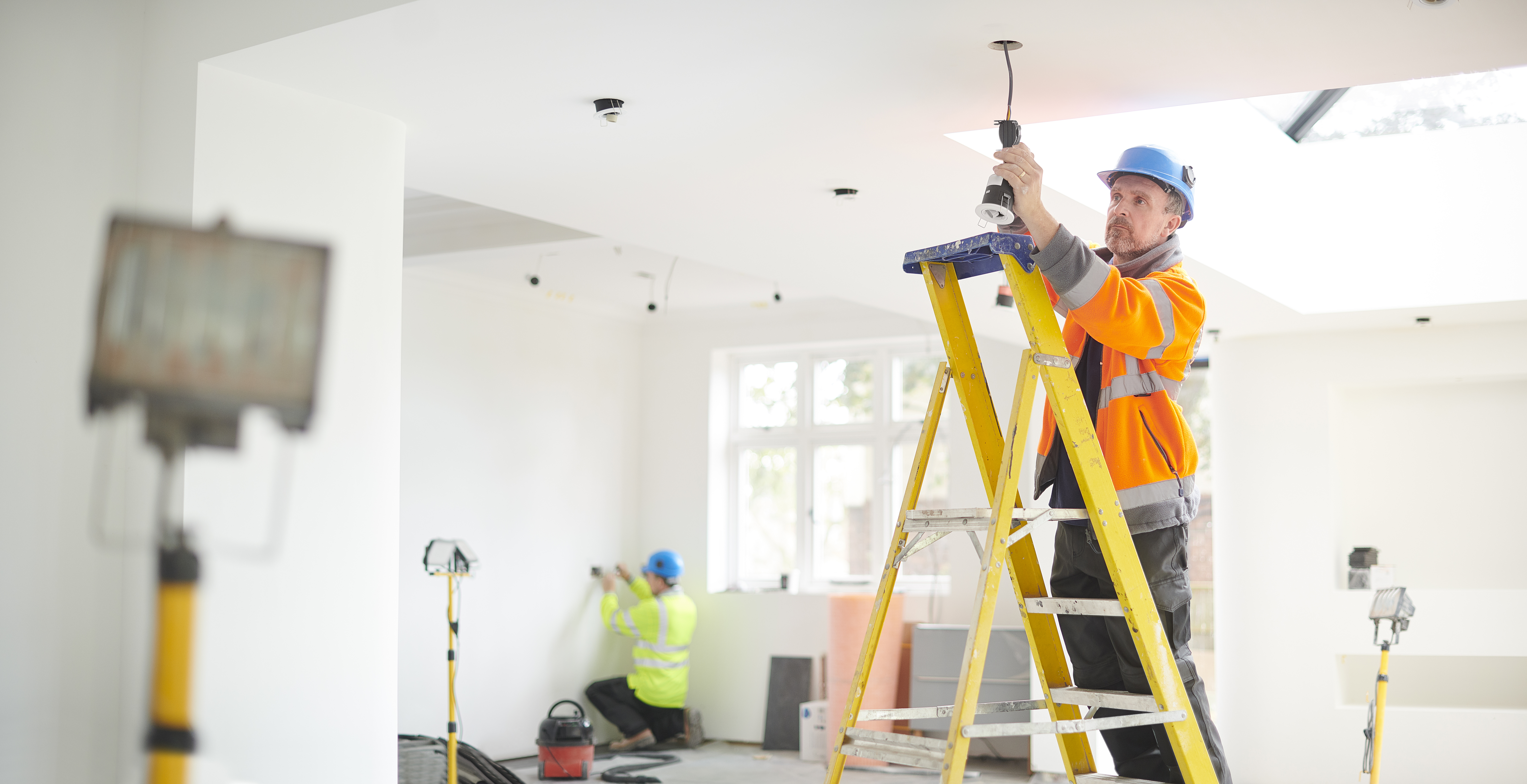
How much does it cost to add an electrical outlet in Atlanta? Learn about average prices, local permits, and what impacts the cost in the Atlanta area.
These instructions get you right down to electric avenue


If you’ve finally decided to swap out those 1980s light fixtures with something more modern, you’ll need to learn to do some light electrical work. The process of connecting electrical wires is a DIY-friendly electrical task that’s perfect for a lazy Sunday afternoon. Provided you’re working with a single-pole switch or other basic set-up, all you'll need are a few tools and supplies, and a little concentration.
Before you can start connecting electrical wires, it’s important to take a few safety precautions and ensure you are working with the correct materials.
Before performing any electrical work, you should always shut off the main circuit breaker. The breaker panel is usually located in a basement, garage, or utility closet and is hidden by a gray or brown metal door. Inside, you will see switches for the different circuits that control the flow of electricity in your home. The main circuit switch should be on top and is usually much larger than the others. If you feel comfortable, you can switch off just the circuit for the area where the fixture you're working on is located, but make sure to test the power in the room before proceeding to confirm that it is definitely off. As an additional safety measure, wear rubber gloves and rubber shoes, as rubber can act as an insulator and prevent electrocution.
Next, you need to ensure that the wire nuts you have are adequate for the number of wires you wish to join and for the wires you're working with. The connectors come in different sizes, and the packaging should indicate the minimum and maximum number of wires that it can accommodate. If the package doesn't provide this information, you should check the manufacturer's website.
Connectors, terminals, and lugs have a rating that indicates the type of wire material they are made for, such as CU for copper or AL for aluminum and copper clad/aluminum. Some connectors are marked with "CU/AL," indicating that they are suitable for use with either copper or aluminum wires.

Using a wire-stripper (ideally, a two-in-one stripper and cutter), strip the ends of the wires you wish to connect. Some wire-strippers sold now double as wire-cutters, which could be handy to have around. Each connector should indicate, on its packaging, how much of the wire you should strip, generally ranging from 1/2 inch to 5/8 of an inch. If you’re working with stranded wire, strip it 1/8 of an inch more than the solid wire.
Be careful not to damage the wire when you strip the ends; a nicked wire can create a hotspot when the circuit is loaded which, over time, will loosen the connection.

With the same color wires (black/hot with other black/hot and white/neutral with other white/neutral) held parallel with their ends aligned, place the wire connector on top of the wire. Next, twist the connector clockwise to allow the wires to wrap around each other. Check that each wire is secure.

Another option is to connect the wires to a screw terminal, which contains a screw to connect the wire to the conductor. These usually exist on light switches and other single-pole electric connections in your home. To make the connection this way, make sure the wire is stripped as we described before, usually just 3/4 of an inch.
Using pliers, bend the stripped area into a clockwise loop. Hook the wire under the screw and create a tight loop around the screw. Tighten the screw with a Phillips or flat head screwdriver, whichever is required for your receptacle, and repeat for each wire connection.
If you are working with a three-pole switch or something more complicated, it’s wise to consult a local electrician. Most light switches are single-pole switches with two terminals.
Simple rewiring projects, such as changing a light fixture, are relatively easy for the DIYer to complete, provided you take the safety steps we outlined earlier in this article. More complicated electrical work should be done by a professional electrician near you; these experts have many years of on-the-job training and are familiar with the inner workers of three-way terminals, circuit breakers, and more. The cost to hire an electrician is $50 to $100 per hour, on average, though many have minimum fees; it makes sense to bundle all your electric projects for their visit to save money.
From average costs to expert advice, get all the answers you need to get your job done.

How much does it cost to add an electrical outlet in Atlanta? Learn about average prices, local permits, and what impacts the cost in the Atlanta area.

Wondering what rewiring a house costs in Atlanta? Find out what drives the price and how to plan for this important electrical upgrade in your area.

How much does an electrical box replacement cost in Atlanta? Learn what affects the price and how much you can expect to pay.

Adding an outlet to your home can be as straightforward as connecting to an existing circuit. Learn how to wire an outlet from another outlet in this advanced-level DIY guide.

Finding the best electrician for your project starts with asking the right questions and checking credentials. Here are tips on how to find an electrician.

Wiring your house for ethernet can provide high speed, reliable, and secure internet access. Here’s who can ethernet wire through your walls.